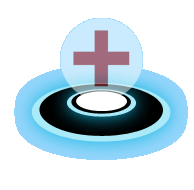







|
|
This first aid section contains the basics that we believe everyone should know about.
Simple things such as blisters and nose bleeds can easily occur in your daily life.
The only exception to this would be the CPR (Cardiopulmonary Resuscitation) section.
While the technique itself is a bit advance, knowing how to perform this during an emergency situation can be life-saving.
|
Blisters
Occurs when the skin is irritated by heat or friction.
Treatment:
- Wash the affected area with soap and water.
- Apply moleskin (or foam pad) in the shape of a donut and fit the hole around the blister.
- Apply enough so the moleskin is level with the top of the blister.
- It is best to leave the blister intact, however if needed, you can break the blister.
- Clean the area to be treated and sterilize a pin.
- Prick the side of the blister and squeeze the liquid out.
- Clean the wound and apply bandage.
|
Fishhook
Fishhook injuries are one of the most commonly treated outdoor sporting accidents.
Fishhooks are designed to penetrate flesh and latch onto it.
If the fishhook is snagged on the face, eye, or earlobe, do not attempt to remove it yourself.
You may cause more harm than good.

Treatment:
- Tie a length of fishing line around the hook.
- Keep the affected part flat while gently pushing down on the hook; this will loosen the barb from the injured tissue.
- Ensure your surrounding is free of bystanders.
Continue to push down on the hook and give the line a quick tug.
- Wash and bandage the affected area.
|
Nosebleed
This is not very serious and would usually stop after a few minutes.
Treatment:
- Have the person sit up and lean forward to prevent blood from draining into the throat.
- Pinch the bridge of the nose and hold for a few minutes.
- If needed, apply a cool, wet cloth to the nose and face.
|
Object in Eye
Any foreign object in the eye may endanger vision.
Treatment:
- Have the person blink their eyes; their tears may flush the object out.
- Pull the upper lid over the lower one in an attempt to brush out the object with their eyelashes.
- Or, use the corner of a sterile gauze pad or clean handkerchief to wipe it out.
- Rinse the affected eye with water.
- If all else fails, seek medical attention.
|
Cardiopulmonary Resuscitation (CPR)
Cardiac arrest occurs when the heart stops beating or beats ineffectively to circulate blood.
When the heart stops beating, breathing will soon stop, and the body's organs will no longer receive the oxygen they need to function.
When a person is in cardiac arrest, they are unconscious, not breathing, and has no heartbeat.
Cardiac arrest can happen suddenly.
CPR is a combination of chest compressions and rescue breaths.
The chest compressions circulate the blood and the rescue breaths provides oxygen in the lungs.
Think of the acronym ABCD when performing CPR: Airway, Breathing, Circulation, Defibrillation.
- Airway: position the head properly and ensure that there is nothing blocking the airway.
- Breathing: put your ear above the victim's mouth and look at the chest for movement.
Listen for sounds of breathing and see if you can feel the breath on your cheek.
Rescue breathing will get oxygen into the person's chest.
- Circulation: chest compressions will temporarily help circulate the blood in the body.
- Defibrillation: a portable electronic device that analyzes the heart's rhythm and delivers an electrical shock to help the heart re-establish an effective rhythm.
Treatment:
- Call 911 or the local emergency number.
- Ensure the person's back is on a firm, flat surface.
Position your body by kneeling beside the person's upper chest and place your hands in the correct position (keep your arms and elbows a straight as possible so that your shoulders are directly over your hands.
- Locate the correct hand position by placing the heel of one hand on the person's sternum (breastbone) at the center of their chest.
Place your other hand directly on top of the first hand (keep your fingers off the chest.
- Give 30 chest compressions in the rhythm, “one and two and three and...”.
Compress, at least two inches, the person's chest straight down with the weight of your upper body.
- Open the airway and give two rescue breaths.
- Continue providing CPR until you notice obvious signs of life (breathing), medical services arrive to take over, you are too exhausted to continue, or the scene becomes unsafe.
Treatment for an adult and child are similar.
However, for an infant, the hand position requires two or three fingers instead of using two hands.
|
|















